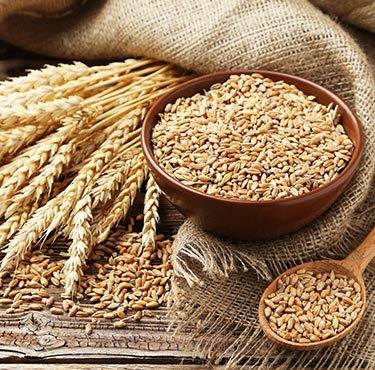Durum wheat is a valuable crop known for its high protein and strong gluten. It is widely used to make pasta, semolina, couscous, and bakery products. Its golden color and firm texture make it stronger than regular wheat, creating strong demand in countries like Egypt and Nigeria where the processed food industry is growing fast.
For farmers, millers, and exporters, success in global trade depends on maintaining good quality, following price trends, and building trusted trade partnerships.
Why Durum Wheat Is in High Global Demand
Durum wheat’s hardness and high protein (about 12–15%) make coarse semolina that keeps its shape after cooking. This is why pasta makers and food companies around the world prefer it.
Main reasons for rising global demand include:
- Rising Pasta Consumption: The global pasta market is worth more than USD 50 billion and continues to grow, especially in Asia and Africa.
- Health-Conscious Consumers: People looking for high-protein and fiber-rich foods choose durum wheat products.
- Urbanization and Processed Foods: The growth of fast-food chains and ready-to-eat meals has created a steady demand for durum wheat.
Major Importing Countries for Durum Wheat
Understanding buyer markets helps exporters plan better. The top importers of durum wheat are:
- Italy: The largest buyer and user of durum wheat for pasta production.
- Algeria and Tunisia: Import heavily for their Pasta and couscous industries.
- Morocco: Depends on imports due to limited local harvest.
- United States: Imports for specialty pasta and semolina-based foods.
- Turkey: Imports for milling and re-exporting pasta and flour.
- Spain and France: Add imports to their local production from North America and Eastern Europe.
- India (Sometimes): Buys small amounts depending on crop quality and price.
Top Exporting Countries of Durum Wheat
Only a few countries dominate durum wheat exports because of their strong production and supply systems:
| Country | Annual Export (MMT) | Main Destinations |
| Canada | 4–5 MMT | Italy, USA, North Africa |
| USA | 1–1.2 MMT | Japan, Mexico, Italy |
| France | 0.4–0.5 MMT | EU, Algeria, Tunisia |
| Australia | 0.3–0.4 MMT | Southeast Asia, Middle East |
| Turkey | 0.2–0.3 MMT | EU, North Africa |
| Russia Ukraine | 0.2–0.3 MMT (combined) | Middle East, Africa |
Leading Indian Durum Wheat Exporters
India’s durum wheat exports are growing steadily, led by high production in Madhya Pradesh, Maharashtra, and Punjab. Top Indian exporters include:
- Shree Kailash Grain Mills Pvt. Ltd. (Indore, MP): Large processor and exporter of premium durum and semolina.
- Satyam Cereals Pvt. Ltd. (Pune, Maharashtra): Supplies high-protein durum to Middle Eastern pasta industries.
- Raghav Product Pvt. Ltd. (Indore): Exports organic and traceable wheat to Europe and Asia.
- Rashmi Agro International (Ahmedabad, Gujarat): Specializes in containerized exports with strict quality checks.
- Agrocorp International India Pvt. Ltd.: Well-known exporter with a global trade network.
All these companies follow standards like ISO 22000, HACCP, and FSSAI, which makes them trusted by global buyers.
Steps to Sell Durum Wheat in International Markets
- Study the Market:
Learn what each country needs, their food preferences, and import rules. For example, Italy prefers wheat with high gluten, while North African buyers focus on price and color. - Register as an Exporter:
In India, you need registration with the Directorate General of Foreign Trade (DGFT) and an Import Export Code (IEC). Other countries have similar requirements. - Meet Quality and Certification Standards:
Important quality factors:
- Protein: 12–15%
- Moisture: Below 12%
- Color: Amber-yellow
- Purity: Free from dirt and foreign material
- Common certifications:
- ISO 22000 / HACCP for food safety
- Phytosanitary Certificate for plant health
- Certificate of Origin for export documentation
- ISO 22000 / HACCP for food safety
- Find the Right Buyers:
Use verified B2B trade platforms like Tradologie.com to connect directly with international importers safely and transparently.
- Set Competitive Prices:
Global durum wheat prices range between USD 350–450 per metric ton depending on quality and shipping costs. Long-term buyer contracts often bring stable pricing.
- Plan Logistics and Packaging:
Durum wheat is shipped in bulk through containers or large vessels. Major Indian ports include Mundra, Kandla, and Nhava Sheva. Ensure fumigation, waterproof packaging, and correct labeling to maintain quality.
- Prepare Export Documents:
- Commercial Invoice
- Packing List
- Bill of Lading / Airway Bill
- Phytosanitary Certificate
- Certificate of Analysis
- Insurance Certificate
- Commercial Invoice
Complete and accurate paperwork helps avoid customs delays and builds buyer trust.
Challenges in Durum Wheat Export
- Quality Changes: Weather and soil can affect protein and hardness.
- Logistics Issues: Changing freight rates and port delays can slow shipments.
- Trade Rules: Export bans or quotas can disrupt supply.
- Global Competition: Canada and the U.S. dominate top markets, so Indian exporters should focus on better pricing and niche quality.
Future Outlook for Durum Wheat Export
The global market for durum wheat will keep growing because of:
- Rising pasta demand in Asia-Pacific and Africa.
- Expansion of bakery and couscous production in the Middle East.
- Increased interest in organic and traceable food products.
Exporters who keep good quality, transparency, and timely deliveries will benefit most. Digital platforms and sustainability certifications will shape the future of wheat trade.
Conclusion
Durum wheat is more than a staple crop it’s a key part of the global food industry. Exporters who understand markets, ensure steady quality, and build reliable buyer relationships will grow fast.
Platforms like Tradologie.com make this process easier by connecting exporters with verified buyers worldwide, enabling safe and transparent bulk trade.
Whether you are already exporting or starting new, focusing on quality, certification, and buyer trust will help you build a strong place in the global durum wheat market.

















